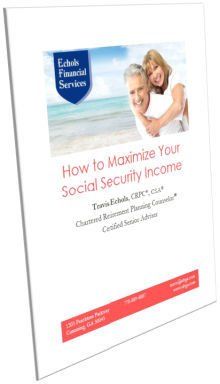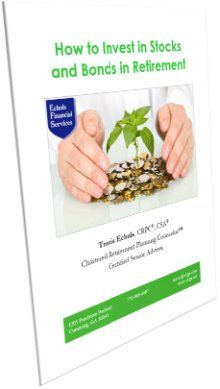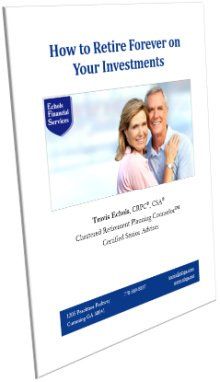Living the Dream

Originally written on 4/8/2017.
“Living the dream!” What would it look like for you? Maybe you’ve said it facetiously (when the dream feels more like a nightmare). But there is some wisdom in seriously personalizing such a sentiment.
When I left a 19-year engineering career to become a financial adviser in 2002, I was pursuing my dream of helping people achieve financial success.
Sign up to receive free monthly email articles on retirement planning and investments--no cost, no obligation
.
Bob and Peggyare a hypothetical couple who will serve as a case study for illustrative purposes only. They are nearing the finish line of an ambitious goal he and his wife set many years ago. Let's reflect on their story.
Here are some insights.
Dream big and don’t worry
Bob and Peggy needed to clarify, prioritize, and quantify their goals, and then developed a plan to accomplish those goals. They had a dream to educate their children, retire early, travel, and support causes and interests they believed in--without worrying about running out of money.
By following our agreed-upon plan, they have had the confidence to enjoy life and focus on the things that they do best, knowing they are on track to achieving those goals.
One of the things Bob told me in our last discussion was “I’ve never worried about it.” That is a remarkable thing to hear someone say. It is remarkable because it dawned on me, "it’s hard to dream big while worrying." Worrying shrinks your goals.
Bob and Peggy have kept their eyes on the dream, focusing on the things they could control (like their work ethic, employment, spending habits, savings, tax strategies, and investment decisions)—not the things they cannot (like the economy, the market, and interest rates). They have ignored the noise that could have distracted them from realizing their dream.
Do what you know to do
The difference between knowing what to do to succeed and doing it has been dubbed by Carl Richards as "the behavior gap." A few years ago, Bob lost his job, and started a new business. Peggy continued working hard during this period, which reduced their financial stress, prevented their savings from being depleted, and gave them options. (It is always good to have options.)
The business revenue was climbing, but it was apparent after several months that it would take too long to replace Bob's previous wages. Though he didn’t relish the idea, he took a position in his previous profession with a different company so he could earn more money.
This was a critical point in Bob and Peggy’s financial story. A successful financial life is not completely in our control, but many of our big turning points involve hard decisions--trade-offs that are not just about money, but other scarce resources such as our values, time, and energy. Bob surveyed his personal values, skills, resources, time, and opportunities and decided to maximize his human capital so that their long-term dream could come true. In this case, their goal to make more money and retire early was more important to them than building a new business. He knew what to do and did it.
Bob and Peggy have also been tempted with innumerable allurements to spend more (and thus, save less) money. Though they have by no means lived like misers or failed to enjoy themselves, they have remained steadfast and disciplined to accomplish their long-term goals. Here is another example where this couple has wisely managed their human capital regarding spending and household cash flow. They knew how much they needed to save, they knew they could save it, and they did it.
Bob and Peggy also experienced the Great Recession from 2007 to 2010. It was a harrowing time for investors, but Bob and Peggy didn’t panic and sell their investments in the downdraft. They didn’t make that big mistake. They understood that volatility is the price you must pay for superior, long-term growth.
They were hopeful, patient, and disciplined. They focused on their dream and kept the faith, not giving into the fear that overtook so many. As a matter of fact they capitalized on the crisis by buying more stocks and reinvesting dividends while shares were “on sale.” And they’ve never gotten bogged down in the virtually irrelevant investment minutia of benchmarks, alpha, beta, etc.
By simply following sound investment principles they have assured themselves of a far better lifetime return than the average investor. Again, they knew what to do to succeed and did it.
Since it is your dream, feel free to change it
The one thing I can tell you about any financial plan (which is an uncertain forecast of the future) is this: Life doesn’t follow our blueprint. Life is dynamic, ever-changing--not static. So any plan, with any specificity at all, must be adjusted to life’s detours and changing economic conditions.
As Bob and Peggy’s planned retirement date arrived, we sat down to evaluate their situation. They were in their mid-50s, physically healthy, debt free, and had their children almost educated. They were earning a good income and maximizing their savings in the most tax-efficient manner--and they weren’t at all miserable working their jobs.
They were faced with a trade-off:
- Work a few more years, add to the nest-egg, and likely enjoy a higher lifetime income, or
- Retire now, be free from the daily grind, but settle for a lower lifetime income?
This decision was not a no-brainer (pardon the double negative, but to say it was a “brainer” might not make sense). They could have retired; but as we looked at the numbers, some inescapable truths began to reshape their original plan.
If they continued to work and save for a just a few more years, in all probability, they could significantly, but not vastly, increase their nest-egg while simultaneously reduce the number of years needed for it to produce income. This in turn would significantly, but not vastly, increase their lifetime retirement income.
By working longer, they could more easily bridge the income gap between retirement and age 59½ (avoiding any early withdrawal penalties), as well as between retirement and the start of Social Security benefits. They decided to postpone their retirement date to shoot for a higher lifetime income.
So, at the age they had planned to retire, they chose not to retire. When they reached that point in time, they realized there was a better dream than their original one: to retire a little later and a little wealthier. Since it was their dream in the first place, they felt free to change it as they pleased.
Keep looking forward
This revised retirement goal will still require careful management of portfolio risk, income, inflation, health care costs, taxes, and Social Security options . Retiring before age 60 means planning for an inflation-adjusted income for over three decades. This is challenging, but now is the time to be making the necessary investment changes for a smooth glide path for their retirement.
Bob and Peggy had a dream to educate their children, retire early, and travel and support the causes near to their heart--without worrying about running out of money. They are thankful and excited about this dream coming to fruition. I hope you are living your dream, or making good progress toward it. If you need help, contact me .


Travis Echols , CRPC®, CSA
Receive free Social Security Guide by email




Investment Advisory Services offered through JT Stratford, LLC. JT Stratford, LLC and Echols Financial Services, LLC are separate entities.











